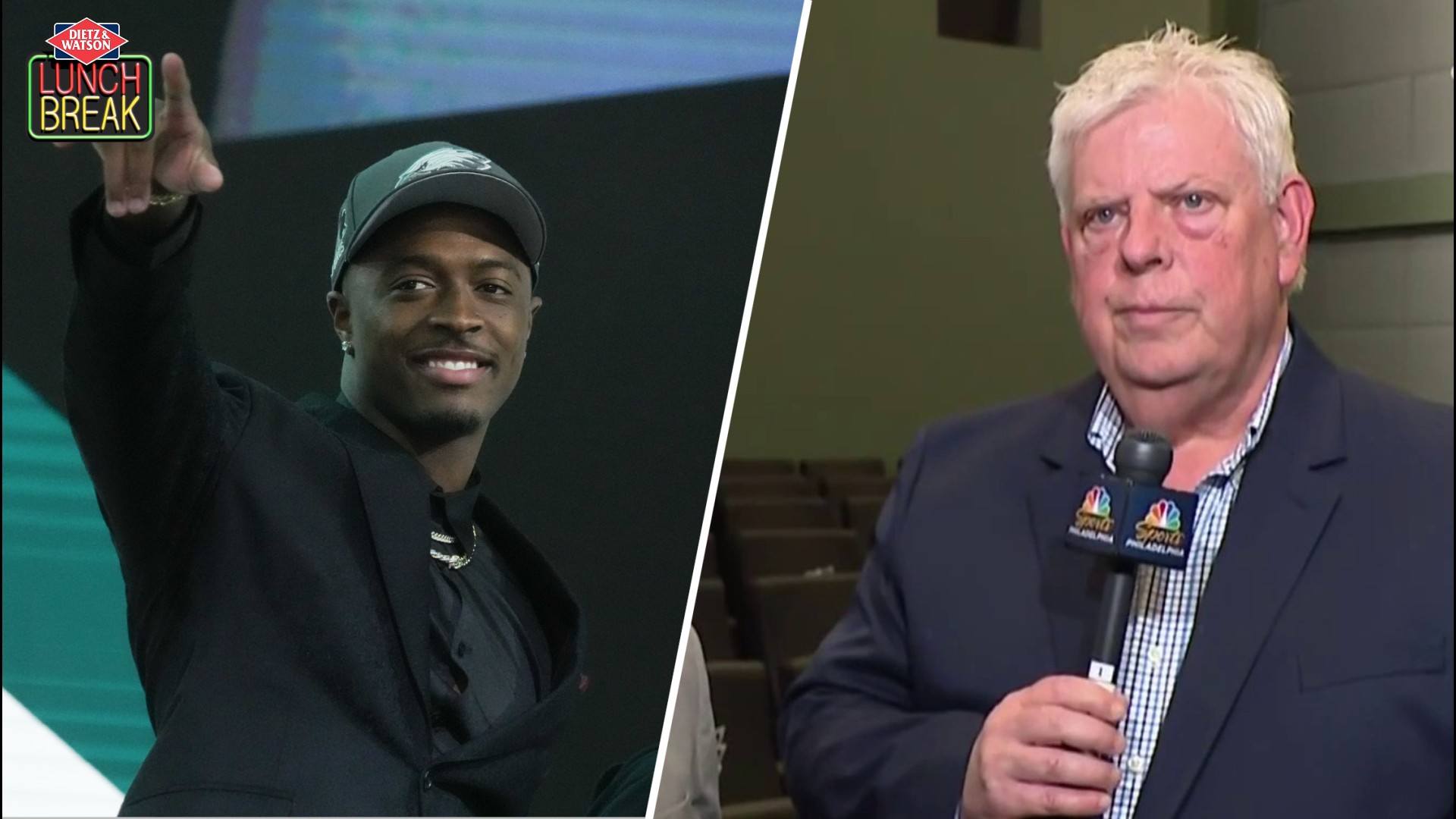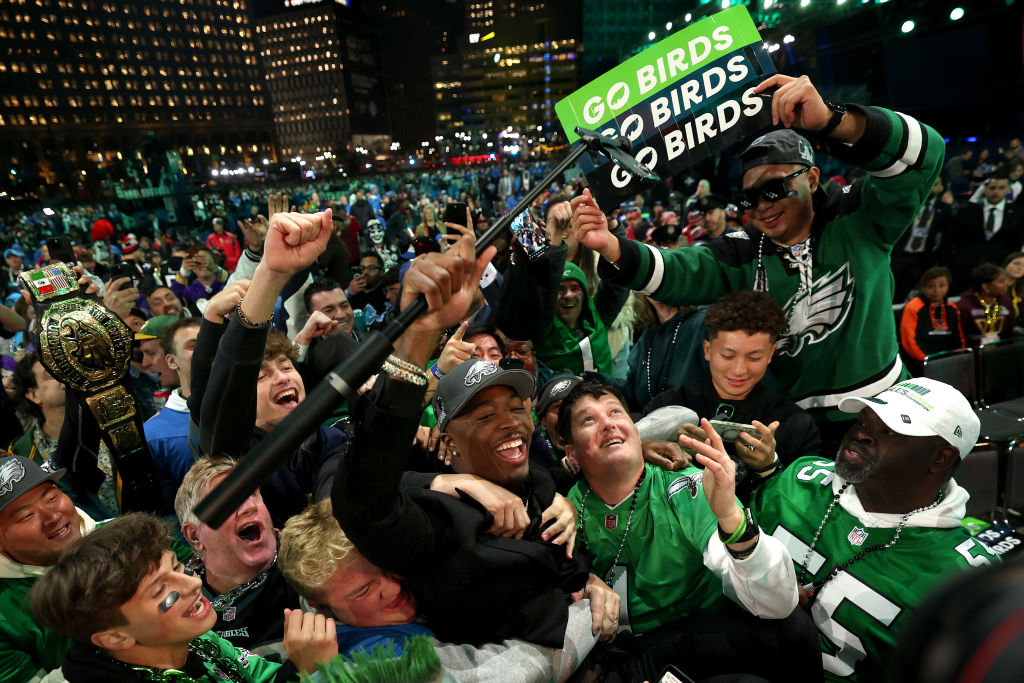Torrey Smith deserves credit for a strong postseason, aiding the Eagles' path to a Super Bowl championship with 13 receptions for 157 yards and one touchdown. Yet, despite Smith's efforts in the playoffs, the team saw room for improvement.
Smith was traded to the Panthers, and Mike Wallace signed on a few days later to replace him.
So, did the Eagles succeed in upgrading the wide receiver position?
Better
WR2
Swapping Smith for Wallace was instantly labeled a success back in March, and four months later, it's still difficult to argue. Not only did the change in personnel save the Eagles money, it also appears the offense added a better all-around weapon as well.
Philadelphia Eagles
Complete coverage of the Philadelphia Eagles and their NFL rivals from NBC Sports Philadelphia.
Wallace is known for being a deep threat, thanks in part to his 4.3 speed, but he's actually more versatile than that. The 10th-year veteran has been a model of consistency for most of his NFL career, averaging 59.8 receptions for 896.9 yards and 6.3 touchdowns per season.
Postseason performance aside, Smith had 36 catches, 430 yards and two touchdowns for the Eagles. He was a bit of a one-trick pony as a vertical receiver and has developed a bad case of the dropsies. There's no reason Wallace can't be more productive.
Worse
Older
Then again, one of the potential downsides to Wallace is his age. He turns 32 in August, so the Eagles should be mildly concerned the wheels could come off. Even though he is more than just a deep threat, speed is still a big part of Wallace's game.
That being said, there's little evidence a huge drop-off is around the corner. In 2017 with the Ravens, Wallace finished with 52 receptions for 748 yards and four touchdowns - production a 29-year-old Smith hasn't sniffed since '14. Wallace is only a year removed from a 1,000-yard campaign. His age could be considered a risk, but it's a calculated one.
The same
Alshon Jeffery
Chances are Jeffery will be even more dominant in '18, seeing as he won't be playing the entire year with a torn rotator cuff. The injury certainly helps explain why the 6-foot-3, 218-pound wideout seemed to disappear for stretches in his first season with the Eagles. Could he average better than 3.6 receptions and 53.1 yards per game in his second campaign? Sure.
Yet, even with a bum shoulder, Jeffery managed to haul in 12 touchdowns, including playoffs. He's an absolute monster in the red zone, or any type of jump-ball scenario for that matter. That much isn't changing anytime soon.
The unknown
Mack Hollins, Shelton Gibson
There are two ways to look at the free-agent addition of Wallace. One is it made the Eagles better. The other was to look at it as an indictment of the team's fourth- and fifth-round picks from last year's draft.
After a nice, little rookie season with 16 receptions, 226 yards and a touchdown, Hollins appeared poised to take Smith's spot for a few days. Gibson was coming along a little more slowly, but was contributing on special teams by season's end and had a chance to crack the rotation. Instead, their roles are expected to remain limited.
To be fair, the Eagles are trying to repeat, and we probably shouldn't look too much into this. Regardless, it's a couple of second-year players we may not see a whole lot of - and even if we do, we can't be too sure what either one brings to the table.
Better or worse?
Wallace over Smith? Check. Jeffery healthy? Check. Hollins and Gibson with a year in the NFL under their belts? Check. And we haven't even touched on Nelson Agholor, 25, coming off a breakout season in the slot, and poised to continue rising. The two kids taking a back seat again raises some questions, but all signs still point to this group being BETTER.



